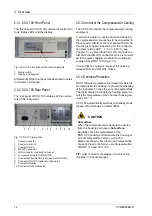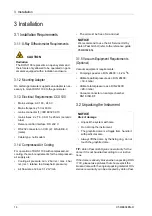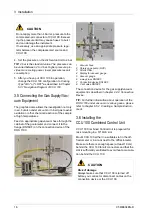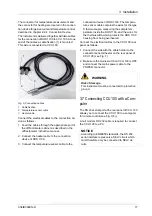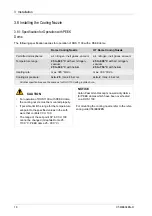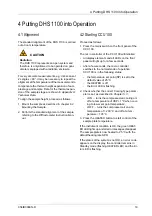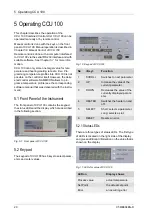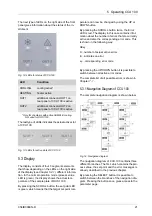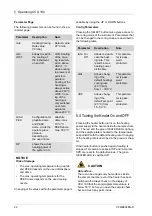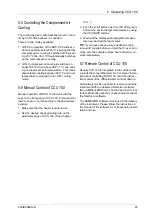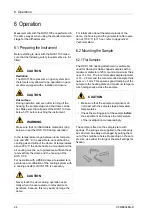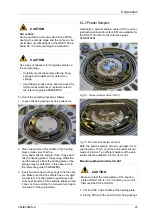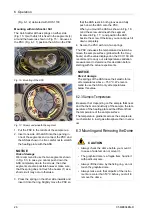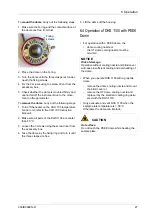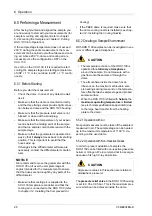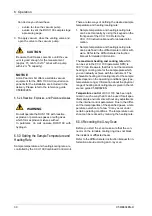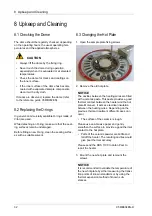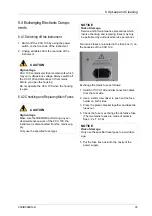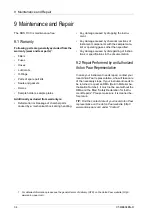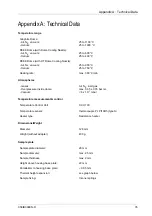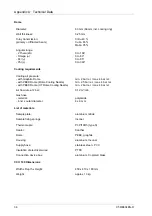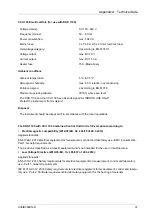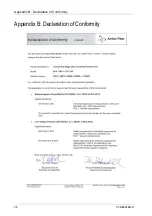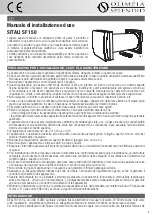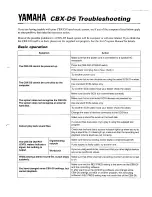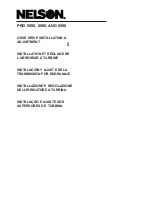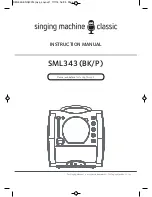
6 Operation
24
C58IB004EN-D
6 Operation
Measurements with the DHS 1100 are performed in
the same way as when using the standard sample
stage for the diffractometer.
6.1 Preparing the Instrument
Before starting to work with the DHS 1100 make
sure that the following safety requirements are ful-
filled:
In the temperature range between room tempera-
ture and 200 °C it is possible to work without the
cooling gas and without the dome. At temperatures
above 200 °C the dome has to be mounted and the
air cooling must be on to guarantee sufficient heat
removal from the dome and the housing of the
DHS 1100.
For operation with a PEEK dome at elevated tem-
peratures a modification of the cooling system with
a cooling nozzle for DHS 1100 is necessary.
For information about the temperatures of the
dome, the housing and the goniometer after opera-
tion at 1100 °C for 1 hour, refer to
.
6.2 Mounting the Sample
6.2.1 Flat Samples
The DHS 1100 heating attachment is preferably
used for flat and/or flake-shaped samples with a
maximum diameter of 25 mm and a maximum thick-
ness of 2 mm. The recommended sample diameter
is 15
20 mm and the recommended sample thick-
ness is
1 mm. This ensures good clamping of the
sample to the heating plate and maximum tempera-
ture homogeneity across the sample.
The sample is fixed on the sample plate with
springs. The springs are supplied in the accessory
box and can be easily exchanged by pulling them
out of the small bore holes. Depending on the sam-
ple size, use either the large or the small springs for
fixation.
CAUTION
Radiation
The DHS 1100 represents an open system and
therefore is only allowed to be operated on goni-
ometers equipped with a radiation enclosure
CAUTION
Hot surface
During operation and even after turning off the
heating, the sample stage and the dome can be
hot. Make sure that all parts of the DHS 1100 are
below 50°C before touching the instrument.
WARNING
Make sure that no inflammable material is lying
below or near the DHS 1100 during operation.
CAUTION
Never touch the dome during operation espe-
cially when it is evacuated or at elevated tem-
peratures, because this may easily damage the
dome.
CAUTION
• Make sure that the sample components do
not react with the sample stage at elevated
temperatures.
• Check the melting point of the sample
before
the experiment and choose the temperature
of the investigation correspondingly.



